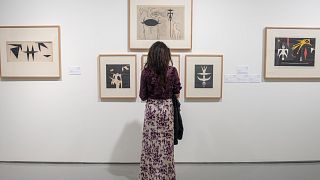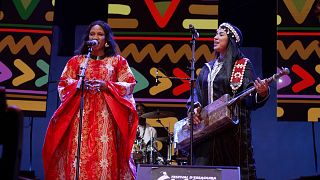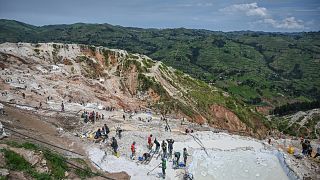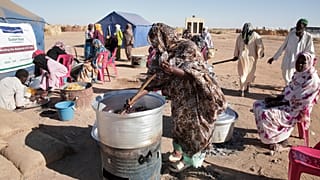Morocco
The Ouaouzguit rug is more than a simple floor covering. It is a symbol of cultural identity.
In southeastern Morocco in the town of Taznakht, the Aguiness rug cooperative produces these rugs in an all-female workplace.
This is not without reason: women have held a strong connection to rug-making for a long time.
Typically, the rugs were part of a bride's dowry and were exchanged as a way of announcing marriages.
Women "expressed their creativity in making the rug and used it as a medium to convey their emotions," said Abderrahmane Janah, who manages the women's carpet centre in Taznakht.
This rug is entirely handcrafted from natural wool collected from the sheep in the region including the Sirwa mountains, not far from Taznakht.
A natural product and a traditional craft
The women in Taznakht wash the wool, spin it then dye with colours extracted from local plant materials such as henna, pomegranate peels, saffron or indigo leaves.
"The advantage of these natural dyes is that they are healthy and do not cause allergies. Also, these dyes remain fixed onto the rug and do not bleed or mix with one another during washing," said Naima Akhraze, a rug artisan at the Aguiness rug cooperative.
Each color and shape in the rug carries meaning, with the geometric shapes symbolizing concepts such as fertility, protection, family or the human connection to the land.
The women weave the carpets using a traditional wooden loom. It takes several weeks or even months to complete a single carpet, depending on its size and the complexity of its designs.
Akhraze said the work used to be done at home, but as lifestyles evolved, women began to gather in women's craft cooperatives to preserve the profession and ensure a steady income.
There are several cooperatives and groups in Taznakht that promote these rugs and aim to sell them at fair prices to support the women who produce them.
The most prominent one is the Women's Centre for the Promotion of the Taznakht Carpet, which consists of 35 cooperatives and includes 3,500 women who weave the rugs.
The centre, which was established in 2016, can produce up to 300 carpets a month nowadays.












01:13
Britain and South Africa hand back Ghanaian royal artefacts
02:20
Seychelles marks 40 years of Kreol festival with vibrant tribute to identity and heritage
Go to video
Documentary reveals underground world of South Korean tattoo artists
02:22
Graffiti transforms Conakry’s walls into canvases for change
Go to video
Ghana: former First Lady Nana Konadu Agyeman-Rawlings has died
01:00
Pumpkins take centre stage at Germany’s biggest autumn festival